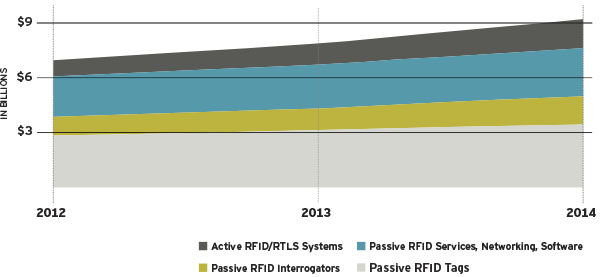Trends—December 2013

Predictive Analytics: A Sure Thing
Here’s a forecast you can count on: Cloud-based predictive analytics offerings are increasingly available to more companies of all sizes. More than 90 percent of the 350 companies polled in a new survey conducted by California-based research firm Decision Management Solutions say they expect to deploy predictive analytics functionalities within the next several years.
Among other survey findings:
- Forty-three percent of companies believe predictive analytics has delivered either a transformative or significant impact to their organizations, an increase of more than 50 percent from the results of a survey conducted in 2011.
- Fifty percent of respondents report they are using predictive analytics to increase customer satisfaction, with more than 30 percent saying they have implemented it to increase customer profitability and reduce customer churn.
- Cloud-based, pre-packaged analytics offerings are more widely deployed than cloud-based analytic modeling or embedding; more than 50 percent of survey participants say they are currently using pre-packagedsolutions. This figure represents an increase of 65 percent from 2011.
RFID Catches Up to Hype
The growth will encompass both passive and active tags, readers, software, and services for RFID cards, labels, fobs, and all other form factors, according to the survey. Demand for RFID continues to increase steadily despite economic uncertainties, thanks to the diversity of its applications—from retail apparel tagging to transport ticketing.
Since 2000, companies have been using passive RFID to improve supply chain visibility, and investing in new RFID technologies and standards. Inevitably, some aspects of RFID were over-hyped, and the cost to invest was prohibitive. Since 2010, however, the industry distanced itself from the hype, and has entered a period of rapid growth and profitability, reports IDTechEx. The research firm estimates 5.9 billion tags will be sold in 2013, versus 4.8 billion in 2012.
Total rfid market projections

Increased RFID use in applications such as retail apparel tagging leads experts to predict steady increases in spending on all types of this technology over the next several years. Source: IDTechEx
5 Enterprise Tech Trends Driving Change in 2014
Enterprise users will gain unprecedented control over their technology environment in 2014, according to Verizon Enterprise Solutions‘ list of top enterprise technology trends for 2014. The new year will see a sharp focus on how enterprises and governments use technology to enhance the customer experience and enable innovation.
Here are the key trends Verizon says will drive change for enterprises and government in 2014:
- The customer of one comes of age. The ability to tailor a customer’s experience to best meet personalized, individual needs will increasingly be a brand differentiator. In 2014, enterprises will refocus on customer touch points, recognizing that integrated omnichannel connections—across online, mobile, broadcast, and in-store—can make customers feel valued at every step of the purchase and experience lifecycle.
These integrated systems will be the key to opening up new routes to markets by enabling businesses to engage directly with the individual on demand, and build trusted connections to simplify transactions. Insight provided by big data analytics will create new, individualized marketing opportunities that will transform and focus the customer engagement model.
- M2M as a service simplifies path to the connected world. Ubiquitous 4G LTE wireless service and the availability of machine-to-machine (M2M) solutions "as a service"—on demand, over the Internet, and ready to use—coupled with strong security will overcome the issues that have previously prevented many organizations from fully embracing M2M.
By leveraging third-party expertise, organizations will be able to quickly transform the conversations of intelligent endpoints into unprecedented insights—and unprecedented business opportunities. As M2M adoption accelerates, manufacturers, dealers, and business partners will be able to realize the full potential of new revenue streams and increased operational efficiencies, while better meeting the needs of their customers.
- The shortage of security expertise forces changes to cybersecurity management. Continued targeted attacks and high-profile security breaches impel corporate boards of directors to demand substantial increases in security investments in 2014—and rethink traditional approaches to cybersecurity management. As enterprises increasingly adopt mobility, big data, cloud, and broadcast solutions, the complexity of effective cybersecurity programs far exceeds both the availability of human capital around the world and the capability of any one enterprise to execute alone.
Enterprises will develop and execute hybrid cybersecurity management models that combine an agile staff of in-house security-minded business experts with trusted managed security services across a broad range of capabilities such as identity management, security analytics and cyberintelligence, governance, risk, and compliance.
- IT decentralizes. Organizations embracing the new information technology world of cloud, mobility, and M2M will see IT increasingly decentralized. Because it is core to every business function, IT will work more closely with individual business units and focus on developing tools for seamless process enablement that empowers employees and customers.
The C-suite lines of business and staff functions will increasingly take the lead role in engaging and deploying in the cloud, because of the immediate deployment speed, flexibility, control, and cost value they see in the cloud, aswell as advantages in big data analysis. IT will be integrated into financial performance planning, and the lines between the IT department and finance will continue to blur as technology becomes the valued enabler, rather than the end game.
- Providers add gravity to the cloud. In a world where mobile is the norm, and rich media content is a given, the cloud will come into its own as the only location where growing data volumes can be stored, accessed, and analyzed on demand.
In 2014, adding software and services to the cloud will be a key focus for cloud providers seeking to attract customers—adding gravity and encouraging user stickiness. Integrated cloud offerings will increasingly enable mashups of fixed and mobile networks; systems, ideas, and solutions; people and things; and intelligence and information. Providing systems and tools to transform this data into insights in the cloud and on demand will enhance the customer experience.
Risky Business
Companies should make supply chain risk mitigation a priority, because odds are most businesses will experience some type of supply chain failure—and the associated financial ramifications—during the coming year.
A new study by London-based Business Continuity Institute reports more than 75 percent of organizations experienced a supply chain disruption during 2012. Forty-two percent of failures originated downstream from the immediate supplier; and 15 percent of the 500 companies polled cited losses exceeding $1.3 million as a consequence of these disruptions.
As to why companies are so vulnerable, respondents suggest it’s all contingent on how much influence supply chain has within an organization. Sixty-two percent note "top management commitment to managing the supply chain is inconsistent or totally lacking."
Meanwhile, 75 percent of companies polled acknowledge they do not have full visibility of their supply chain, and 30 percent do not know where they stand among supplier priorities.
